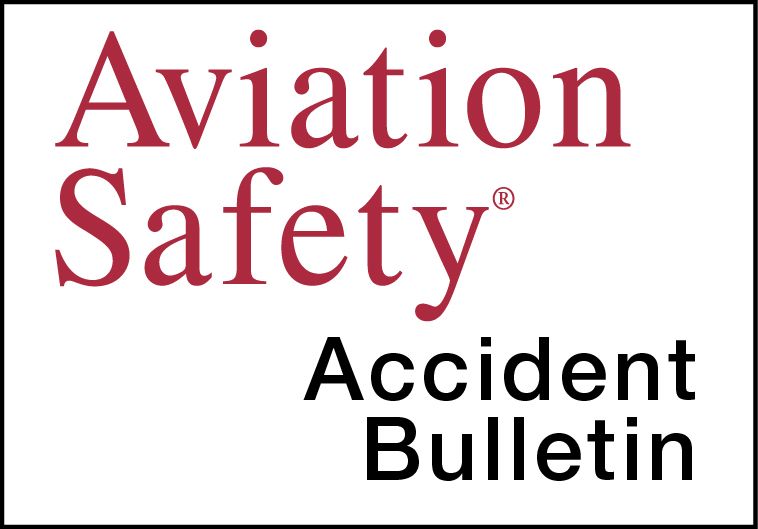AVweb’s General Aviation Accident Bulletin is taken from the pages of our sister publication,Aviation Safety magazine. All the reports listed here are preliminary and include only initial factual findings about crashes. You can learn more about the final probable cause on the NTSB’s website at www.ntsb.gov. Final reports appear about a year after the accident, although some take longer. Find out more about Aviation Safety at www.aviationsafetymagazine.com.
March 9, 2019, Chamblee, GA
Gulfstream G-IV
At 1547 Eastern time, the airplane was substantially damaged during landing. The two airline transport pilots and 12 passengers were not injured. The airplane was registered to and operated by Waffle House Inc. as a corporate flight. Visual conditions prevailed.
As the flight neared its destination, ATC advised the long runway (6001 feet) was closed until 1600 but the shorter one (3967 feet) was available. Initially, the crew requested to hold until the long runway reopened but shortly thereafter advised they would be able to land on the shorter runway. The pilot reported an “unusually hard impact” on touchdown; the landing roll and taxi to the ramp were uneventful. A hard-landing inspection was performed, which found substantial damage to the fuselage. Photographs provided by the airport manager revealed two tire tracks in the grass about 5-10 feet prior to the short runway’s threshold.
March 9, 2019, Land O’ Lakes, Wis.
Cessna 177RG Cardinal RG
On its previous flight, the airplane had been filled with fuel and flown for about 3.8 hours. Prior to takeoff, the pilot attempted to refuel the airplane but the self-service fuel pump “failed to dispense fuel.” The pilot visually checked the tanks and determined there was enough fuel for the flight. In cruise flight at about 1800 feet AGL, the “engine stopped.” The pilot executed an engine-out landing to a snow-covered, frozen lake with the landing gear retracted. The airplane sustained substantial damage to its left wing and fuselage. There were two minor injuries.
March 12, 2019, Latrobe, Penn.
Beech A100 King Air
At about 1335 Eastern time, the airplane was substantially damaged when the main landing gear collapsed during landing. The two airline transport pilots and two passengers were not injured. Visual conditions prevailed.
According to the pilot, the airplane was on approach when he lowered the landing gear handle and heard a “crunching noise.” There were no green landing-gear indicator lights. The crew ran the manual gear-extension procedures checklist, but it appeared to be jammed. After a control-tower flyby, ATC observed that the landing gear appeared to be down. On the landing roll, the left main landing gear collapsed, followed shortly by the right main landing gear. Examination revealed the main landing gear mechanical linkage was compromised and the right main landing gear actuator shaft was broken.
March 16, 2019, Talkeetna, Alaska
Cessna 150
The airplane was substantially damaged during an off-airport, emergency landing at about 1650 Alaska time, shortly after takeoff. The flight instructor and student were not injured. Visual conditions prevailed.
During the first takeoff attempt, condensation formed on the airplane’s windscreen, so the instructor aborted the takeoff and taxied back for a second full-length takeoff attempt. Just after becoming airborne, the airplane pitched up unexpectedly, so the instructor pushed the control yoke full-forward to lower the nose, but the airplane failed to respond. Approaching a tree line and unable to correct the nose high attitude, the instructor reduced engine power to idle over tree-covered terrain. The airplane settled into the trees and came to rest near a road. The occupants were able to egress without further incident. The flight’s purpose was an introductory flight lesson to a prospective new student.
March 16, 2019, Riverside, Calif.
Beech D50 Twin Bonanza
At about 1149 Pacific time, the airplane impacted terrain, fatally injuring the solo airline transport pilot. The airplane was substantially damaged. Visual conditions prevailed.
After a delay he attributed to electrical issues, the pilot took off but shortly thereafter advised he was returning with electrical issues and a failed right engine. The airplane subsequently diverted to a closer airport but crashed about two miles from the divert airport. Witnesses observed the airplane flying at a low altitude before its nose dropped and it began to spin. One witness estimated the airplane made 1.5 revolutions before he lost sight of it behind houses. Another witness reported the airplane spinning to its right.
This article originally appeared in the June 2019 issue of Aviation Safety magazine.
For more great content like this, subscribe to Aviation Safety!



































